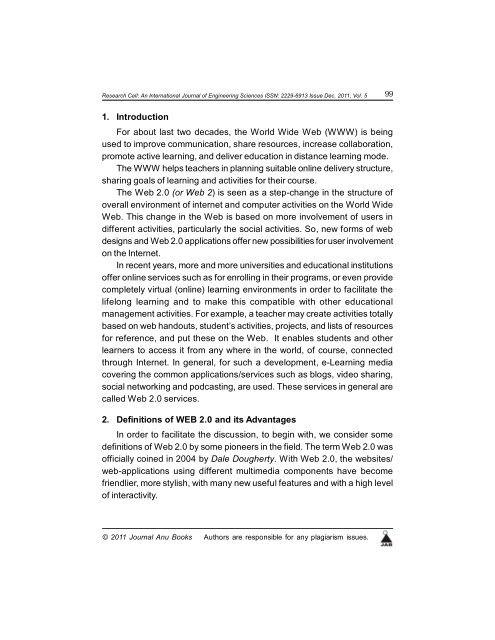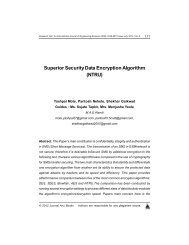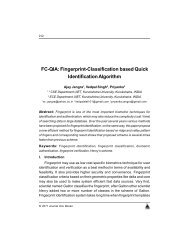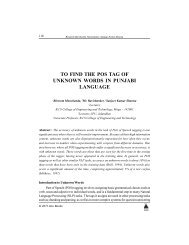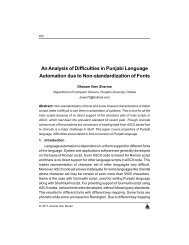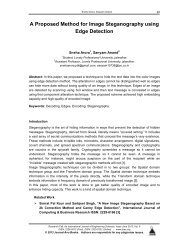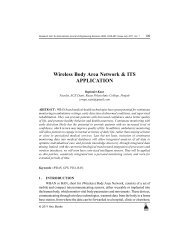Enhancing Teaching & Learning with Web Tools - Ijoes.org
Enhancing Teaching & Learning with Web Tools - Ijoes.org
Enhancing Teaching & Learning with Web Tools - Ijoes.org
You also want an ePaper? Increase the reach of your titles
YUMPU automatically turns print PDFs into web optimized ePapers that Google loves.
Research Cell: An International Journal of Engineering Sciences ISSN: 2229-6913 Issue Dec. 2011, Vol. 5<br />
99<br />
1. Introduction<br />
For about last two decades, the World Wide <strong>Web</strong> (WWW) is being<br />
used to improve communication, share resources, increase collaboration,<br />
promote active learning, and deliver education in distance learning mode.<br />
The WWW helps teachers in planning suitable online delivery structure,<br />
sharing goals of learning and activities for their course.<br />
The <strong>Web</strong> 2.0 (or <strong>Web</strong> 2) is seen as a step-change in the structure of<br />
overall environment of internet and computer activities on the World Wide<br />
<strong>Web</strong>. This change in the <strong>Web</strong> is based on more involvement of users in<br />
different activities, particularly the social activities. So, new forms of web<br />
designs and <strong>Web</strong> 2.0 applications offer new possibilities for user involvement<br />
on the Internet.<br />
In recent years, more and more universities and educational institutions<br />
offer online services such as for enrolling in their programs, or even provide<br />
completely virtual (online) learning environments in order to facilitate the<br />
lifelong learning and to make this compatible <strong>with</strong> other educational<br />
management activities. For example, a teacher may create activities totally<br />
based on web handouts, student’s activities, projects, and lists of resources<br />
for reference, and put these on the <strong>Web</strong>. It enables students and other<br />
learners to access it from any where in the world, of course, connected<br />
through Internet. In general, for such a development, e-<strong>Learning</strong> media<br />
covering the common applications/services such as blogs, video sharing,<br />
social networking and podcasting, are used. These services in general are<br />
called <strong>Web</strong> 2.0 services.<br />
2. Definitions of WEB 2.0 and its Advantages<br />
In order to facilitate the discussion, to begin <strong>with</strong>, we consider some<br />
definitions of <strong>Web</strong> 2.0 by some pioneers in the field. The term <strong>Web</strong> 2.0 was<br />
officially coined in 2004 by Dale Dougherty. With <strong>Web</strong> 2.0, the websites/<br />
web-applications using different multimedia components have become<br />
friendlier, more stylish, <strong>with</strong> many new useful features and <strong>with</strong> a high level<br />
of interactivity.<br />
© 2011 Journal Anu Books Authors are responsible for any plagiarism issues.


